Iran: Phoenix from the Ashes
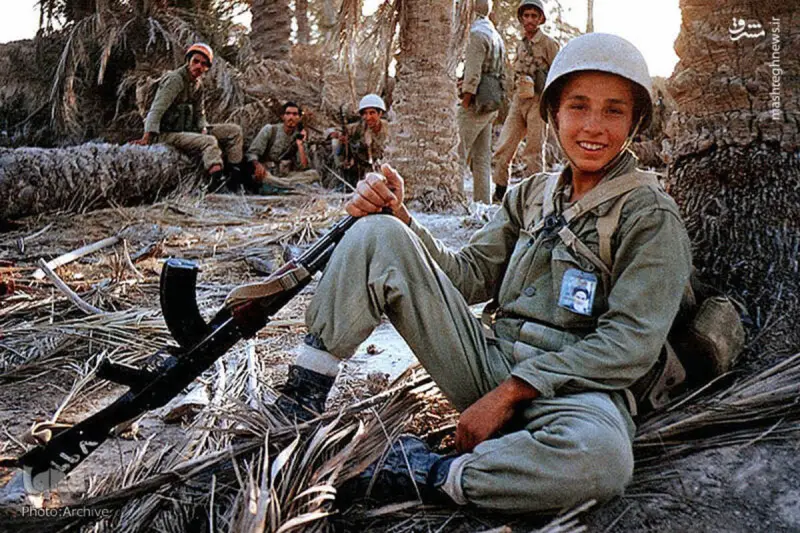
Perhaps this young man will soon exchange the trenches for a student audience, and the machine gun for a fountain pen.
When it seemed that collapse was inevitable...
Let's continue what we started in the article "Why didn't the US remove Khomeini" conversation dedicated to relations between Washington and Tehran during the Iran-Iraq war. In this material, however, we will deviate somewhat from the topic and touch upon the restoration by the Islamic Republic of its military-economic potential.
After the revolution, the Iranian army lost about 40% of its officer corps: purges, emigration.
Those who remained, with the exception of the ayatollah's staunch supporters, were at a loss from uncertainty about the future.
Yesterday, Khomeini’s entourage did not have much confidence in the stronghold of the Shah’s power, having formed a parallel paramilitary structure – the IRGC.
Revolution and fleet
The mentioned losses in all branches of the military were not of the same nature. For example, unlike the Air Force, the Navy was less affected.
Not least of all, the Navy retained personnel due to the patronage of Rear Admiral Ahmad Madani, the first Minister of Defense of the Islamic Republic.
In addition: officers and especially non-commissioned officers of the Navy en masse accepted the revolution, largely due to the principle of recruitment that existed under the Shah, which affected all levels of society.
Here it is worth noting the contrast with French and Russian fleet the period of the collapse of the Bourbon and Romanov dynasties - in both cases, staffed by nobles, practically devoid of representatives of other classes, the naval officer corps suffered significantly.
Suffice it to recall the fate of the outstanding French Commodore D'Albert de Rion, who was almost torn to pieces by a crowd, and the even more tragic fate of Vice Admiral A.I. Nepenin, who became a victim of extrajudicial execution in the first days of March 1917.
The loyalty of the Iranian sailors to the new government, in addition to the above reason, was also determined by the location of the naval bases and its management structures, in contrast to the Air Force, on the periphery relative to the centers where the main events that led Khomeini to power unfolded.
The Shah should also be credited with the transfer in the early 1970s of the main naval base from Khorramshahr, located near the Iraqi border, captured by Saddam’s troops at the beginning of the war, to Bandar Abbas.
In general, the monarch paid a lot of attention to the fleet, thanks to which it became the strongest in the Middle East; Let's say, it was the only one in the region that had hovercraft combat boats.
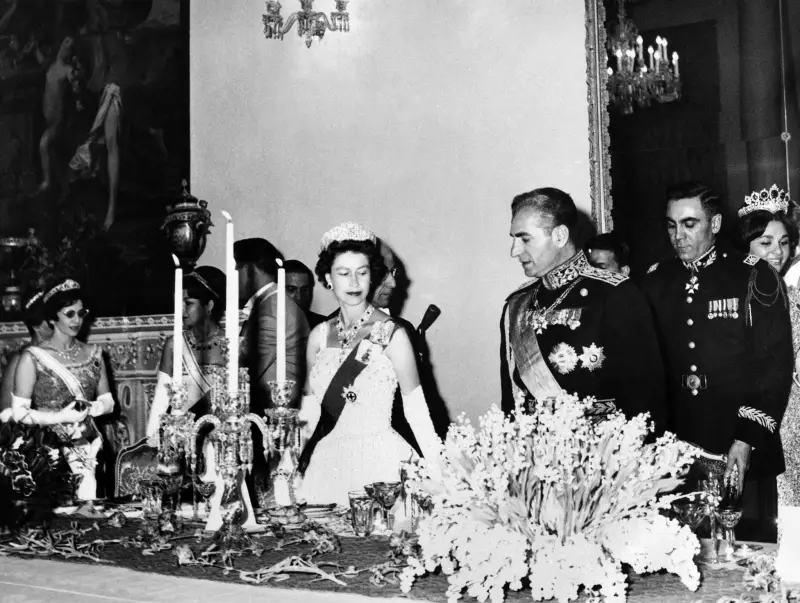
The last Shah loved the military uniform and even wore it to social events.
Shortly before the revolution, Mohammed Reza Pahlavi began creating an ocean-going fleet and planned to build an aircraft carrier in Britain, which, however, he later abandoned - not even that expensive - the Shah did not particularly consider the costs, just remember the celebration of the 2500th anniversary of the Persian Empire. The reason is different: there were not enough personnel to operate such complex equipment.
But preserving the combat potential of the fleet will play an important role at the final stage of the Iran-Iraq war, when the confrontation between Iran and the United States in the Persian Gulf intensifies, as will be discussed later.
However, the sailors, like other branches of the military, were unable to avoid cuts in allocations.
With a certain degree of caution, these figures suggest that Tehran is planning to avoid a war with Iraq. But it was the generous financing of the fleet by the Shah that made it possible to maintain superiority over the enemy navy.
Saddam had neither destroyers, nor frigates, much less the above-mentioned hovercraft.
And he had to take the same strategically important Khorramshahr without support from the sea, where the Iraqi command as a whole unsuccessfully tried to compensate for the lack of advantage with the help of an air force that was more combat-ready than the enemy’s.
After the defeat of the political opposition in 1981 (precisely political, since the military in the person of OMIN exists in Iran to this day), Khomeini firmly established himself in power. Around that time, relations between Tehran and Washington deteriorated.
Someone may object to me: the confrontation began earlier - after the seizure of the American embassy in Tehran. I don’t entirely agree, since holding diplomats hostage did not prevent Irangate.
However, even in conditions when Saddam’s troops, as well as the Kurdish separatists, began to suffer defeats after some successes, the United States did not dare to intervene militarily. We talked about the reasons in the previous article, without mentioning one more.
Could the USSR intervene?
Has the USSR become a deterrent against US aggressive plans regarding Iran? Historian D.S. Krysenko believes yes:
I don’t think that the Soviet Union, being drawn into the whirlpool of the Afghan war, would have intervened if the United States had decided to put Iranian oil fields under its control.
Moreover: under certain circumstances, it was beneficial for the USSR to agree with the USA on the division of spheres of influence in the republic. Moreover, the experience of 1941, although in a fundamentally different historical context, was not forgotten.
Let’s say Moscow could bet on the revival of the system that existed in 1945–1946. under the auspices of the USSR, the Democratic Republic of Azerbaijan and would rely on the Iranian left: Tudeh and YOMIN, trying to smooth out their contradictions.
The United States would rely on the National Front, as well as on the Kurds and Baluchis. By the way, they patronize the latter even at the present stage.
The difficulty in implementing such a strategy would rather lie in the Iranians themselves, who have temporarily forgotten about political contradictions and are able to come out under the banner of preserving the integrity of the country.
And the National Front was a rather loose formation, which was crushed in 1981 by Khomeini, who stopped standing on ceremony with the opposition.
The fall of the Ayatollah's power could also have occurred due to acts of sabotage by the OMIN, which in the same 1981 claimed the lives of the Secretary General of the Islamic Republican Party Beheshti, Prime Minister Bahonar, President Rajai and led to the injury of his successor, Khamenei.
Then, yes, all three parties, while maintaining a united Iran, could agree on its neutral status. The latter would have played into the hands of both the Arabian monarchies, who feared Khomeini, and Israel.
Saddam, in turn, would have to moderate his pan-Arabist ambitions and, under pressure from the superpowers, return to the status quo on the border.
But what happened happened, and the Iraqi army attacked Iran, which was virtually engulfed in the flames of civil war.
It would seem that Baghdad chose the right time for the invasion. In 1980, about 45% of the military equipment of the army that was still the strongest in the Middle East was in a non-combat condition.
And Saddam had reason (although the Iraqi generals were skeptical about his plans) to count on a quick victory, albeit with limited results, expressed only in control of the Shatt al-Arab River.
However, Iranian society did not succumb to defeatist sentiments, and seemingly refined secular intellectuals also volunteered for the army. The clearest example is physicist, Doctor of Sciences Mustafa Chamran.
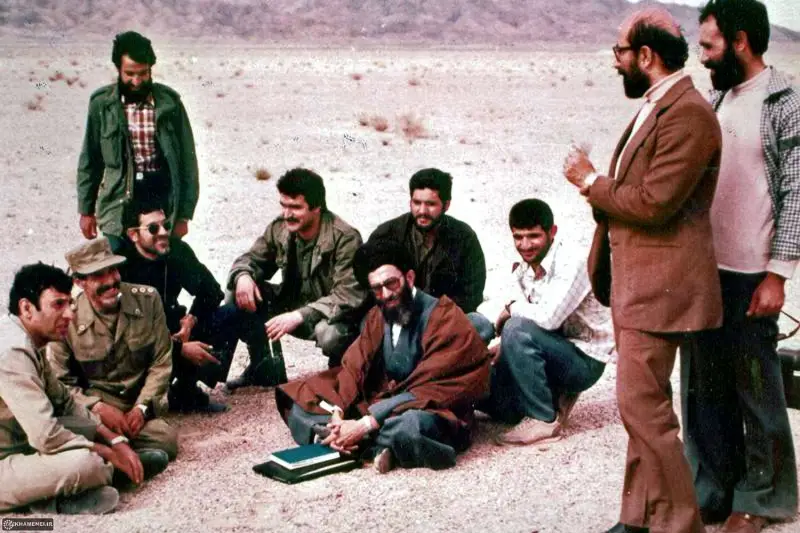
Mustafa Chamran - standing in the foreground wearing glasses and a brown jacket
An unpleasant surprise for Baghdad was the lack of support from the Arabs living in the province of Khuzestan.
Iranian military-industrial complex: phoenix from the ashes
In the Islamic Republic itself, the process of restoring the military industry began. It moved at a fairly fast pace, especially considering the war factor and the American arms embargo. Another thing: taking into account the mentioned Irangate, the word embargo should be enclosed in quotation marks.
Furthermore:
In addition to foreign supplies, the Islamic Republic is laying the foundation for maintaining its own scientific personnel and production base.
In the 1990s - that is, in a short time, if we take into account the chaos of the revolution, the war with Iraq and sanctions - Iranian types of weapons were developed, even if they were mostly cosplay from foreign models previously supplied to the Shah.
We are talking primarily about the main combat tank (a kind of hybrid of T-72 with M-60) "Zulfikar" (for more details see: "Main battle tanks of the Zulfiqar family").
Work on a domestic fighter "Azarakhsh" in the Islamic Republic began even earlier - in the second half of the 1980s, that is, practically in the period we are considering.
Of course, they were not carried out with a clean face - the following was taken as a basis: Northrop f-5, by then outdated. For more information about the Iranian aviation industry, see: “Iran’s new fighters: how to fight against the Raptor and F-35”.

Fighter "Azarakhsh"
Already in 1987, the Iranians began producing anti-tank missiles "Typhoon" - analogue of American TOW. And if we talk about not only anti-tank missiles, then at the same time the production of the first ones was being established in the Islamic Republic "Shahabov", created on the basis of Soviet purchased in Libya R-17 E (For more details see: “Missile potential of the Islamic Republic of Iran (Part 1)”).
Yes, these are not always successful copies. But something else is important for us: engineering and design thought in Iran after the revolution not only survived, but also began to develop.
Same "Azarakhsh" was born through the labors of engineers created in 1988 university aviation technology named after Shahid Sattari. One can only imagine in what difficult circumstances they had to work, caused by war, sanctions and the generally difficult economic situation in the country.
That is, the Ayatollah’s scientific potential was not only preserved, but also increased. For the creation of a university is often identical to the formation of a scientific school and ensuring the continuity of personnel, which - we are talking, of course, about engineering and scientific personnel - are easy to lose, but difficult (and sometimes impossible) to restore at the previous level.
Actually, he writes about this, only using the example of Germany, in a book of memoirs "Addiction" associate of S.P. Korolev, outstanding Soviet physicist, founder of Russian cosmonautics, original thinker-theologian (author of the treatise "The Logic of Trinity") Boris Viktorovich Rauschenbach:
And if such a collapse, despite the incomparability of the level of scientific potential of pre-war Germany and the Islamic Republic, had occurred in Iran, its fate would have been different.
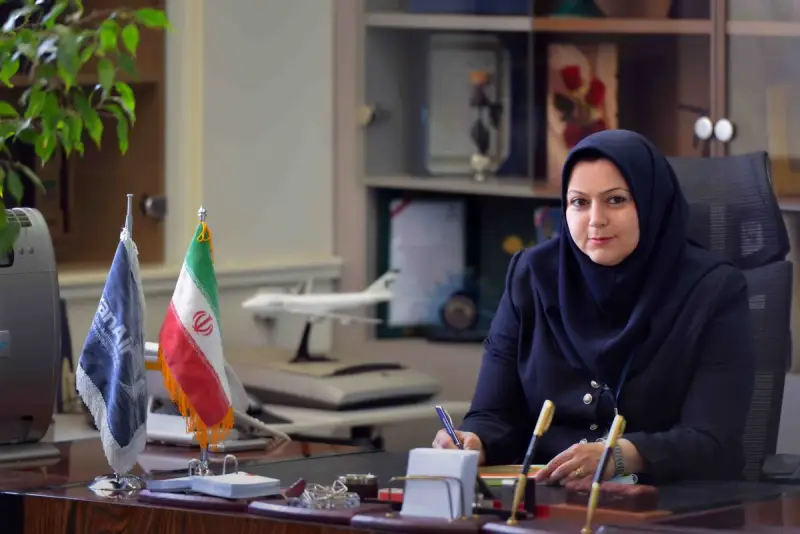
Farzaneh Sharafbafi – who recently headed, for the first time in stories Irani, an airline woman, is a graduate of Shahid Sattari University.
So let’s not make fun of the above-mentioned cosplay when the Iranians are designing their own types of weapons. Let us remember that, say, Tu-4 we designed based on In-29. And China started with shameless copying.
A little aside, since we remembered the Celestial Empire: you can be sarcastic about the lack of a normal Chinese-made engine for J-20 (by the way, the same problem exists for "Azarakhsh"), but to think that this will happen in the long term is ridiculous.
But regarding the prospects for the development of our military-industrial complex, there are many questions, lest we end up in the position of post-war Germany and in the foreseeable future we would not have to purchase engines from China, as we are purchasing now drones from the same Iran.
Iran: from the chaos of the 1980s to the scientific progress of the 2000s
And if we draw a bridge from the 1980s to today, it is impossible not to admit: the key to the current military power of the Islamic Republic - its scientific potential - is actively developing, as I already wrote about in the article “Iran has surpassed Russia in literacy”.
Nowadays, Iranian schoolchildren occupy leading places in international mathematics Olympiads. In ten to twenty years they will become the scientific, engineering and military-political elite of an ancient country that has known ups and downs.
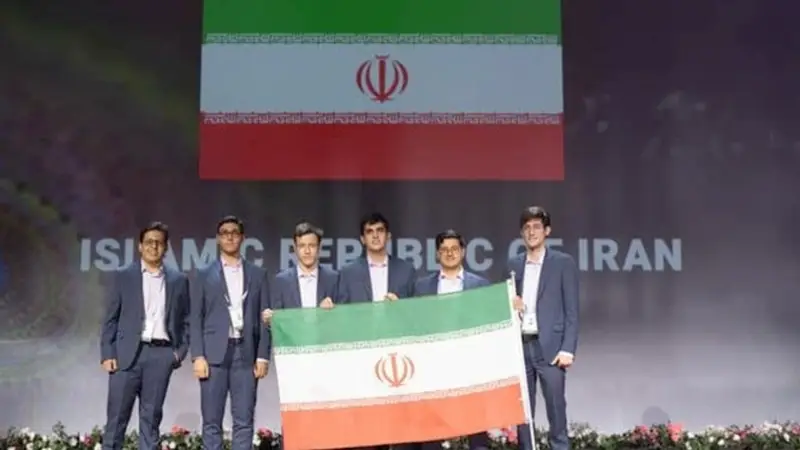
Iranian schoolchildren who won the Mathematical Olympiad
The roots of many of Iran’s current undeniable successes lie in the period we are considering:
It is also worth taking into account the dependence of the Shah's Iran on foreign technologies, relevant components and foreign specialists, mainly Americans, who left the country after the revolution.
Here we would like to keep the old equipment afloat, let alone create new models. But they created them, albeit, I repeat, hybrid ones.
And already in the mid-1980s, Tehran was ready to challenge the United States. Not directly, of course, but relying on Shiite paramilitary groups associated with Tehran in the region.
It was then that the Islamic Republic entered the Middle Eastern geopolitical game, which Washington could not help but take into account, and which we will talk about in more detail in the next article.
Использованная литература:
Krysenko D. S. Geostrategic confrontation between the USA and the USSR during the Iran-Iraq war (1980–1988)
Pavlenko I. E., Reshetnikov L. M. Development of the military-technical potential of the Islamic Republic of Iran (1979–2005).
Sazhin V.I., Bondar Yu.M. Military power of the Islamic Republic of Iran. M.: Moscow University Publishing House, 2014.
Slinkin M. M. Iran-Iraq War 1980–1988. Fight at sea. Simferopol: Taurus. national University, 2001.
Information